Cryptococcus neoformans Escape From Dictyostelium Amoeba by Both WASH-Mediated Constitutive Exocytosis and Vomocytosis
- PMID: 29686972
- PMCID: PMC5900056
- DOI: 10.3389/fcimb.2018.00108
Cryptococcus neoformans Escape From Dictyostelium Amoeba by Both WASH-Mediated Constitutive Exocytosis and Vomocytosis
Abstract
Cryptococcus neoformans is an environmental yeast that can cause opportunistic infections in humans. As infecting animals does not form part of its normal life-cycle, it has been proposed that the virulence traits that allow cryptococci to resist immune cells were selected through interactions with environmental phagocytes such as amoebae. Here, we investigate the interactions between C. neoformans and the social amoeba Dictyostelium discoideum. We show that like macrophages, D. discoideum is unable to kill C. neoformans upon phagocytosis. Despite this, we find that the yeast pass through the amoebae with an apparently normal phagocytic transit and are released alive by constitutive exocytosis after ~80 min. This is the canonical pathway in amoebae, used to dispose of indigestible material after nutrient extraction. Surprisingly however, we show that upon either genetic or pharmacological blockage of constitutive exocytosis, C. neoformans still escape from D. discoideum by a secondary mechanism. We demonstrate that constitutive exocytosis-independent egress is stochastic and actin-independent. This strongly resembles the non-lytic release of cryptococci by vomocytosis from macrophages, which do not perform constitutive exocytosis and normally retain phagocytosed material. Our data indicate that vomocytosis is functionally redundant for escape from amoebae, which thus may not be the primary driver for its evolutionary selection. Nonetheless, we show that vomocytosis of C. neoformans is mechanistically conserved in hosts ranging from amoebae to man, providing new avenues to understand this poorly-understood but important virulence mechanism.
Keywords: Dictyostelium; WASH; amoeba; cryptococcosis; cryptococcus; exocytosis; pathogen; vomocytosis.
Figures
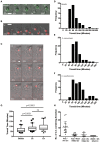
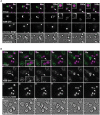
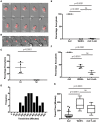
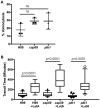
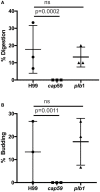
Similar articles
-
Vomocytosis: Too Much Booze, Base, or Calcium?mBio. 2019 Dec 24;10(6):e02526-19. doi: 10.1128/mBio.02526-19. mBio. 2019. PMID: 31874916 Free PMC article. Review.
-
Amoeba Predation of Cryptococcus neoformans Results in Pleiotropic Changes to Traits Associated with Virulence.mBio. 2021 Apr 27;12(2):e00567-21. doi: 10.1128/mBio.00567-21. mBio. 2021. PMID: 33906924 Free PMC article.
-
Cryptococcus neoformans virulence is enhanced after growth in the genetically malleable host Dictyostelium discoideum.Infect Immun. 2003 Sep;71(9):4862-72. doi: 10.1128/IAI.71.9.4862-4872.2003. Infect Immun. 2003. PMID: 12933827 Free PMC article.
-
Actin polymerization driven by WASH causes V-ATPase retrieval and vesicle neutralization before exocytosis.J Cell Biol. 2011 May 30;193(5):831-9. doi: 10.1083/jcb.201009119. Epub 2011 May 23. J Cell Biol. 2011. PMID: 21606208 Free PMC article.
-
Vomocytosis: What we know so far.Cell Microbiol. 2020 Feb;22(2):e13145. doi: 10.1111/cmi.13145. Epub 2019 Nov 20. Cell Microbiol. 2020. PMID: 31730731 Review.
Cited by
-
Vomocytosis: Too Much Booze, Base, or Calcium?mBio. 2019 Dec 24;10(6):e02526-19. doi: 10.1128/mBio.02526-19. mBio. 2019. PMID: 31874916 Free PMC article. Review.
-
The Dual Role of Macropinocytosis in Cancers: Promoting Growth and Inducing Methuosis to Participate in Anticancer Therapies as Targets.Front Oncol. 2021 Jan 19;10:570108. doi: 10.3389/fonc.2020.570108. eCollection 2020. Front Oncol. 2021. PMID: 33542897 Free PMC article. Review.
-
Innate Pulmonary Phagocytes and Their Interactions with Pathogenic Cryptococcus Species.J Fungi (Basel). 2023 May 27;9(6):617. doi: 10.3390/jof9060617. J Fungi (Basel). 2023. PMID: 37367553 Free PMC article. Review.
-
The Hidden Fortress: A Comprehensive Review of Fungal Biofilms with Emphasis on Cryptococcus neoformans.J Fungi (Basel). 2025 Mar 19;11(3):236. doi: 10.3390/jof11030236. J Fungi (Basel). 2025. PMID: 40137272 Free PMC article. Review.
-
A bacterial endosymbiont of the fungus Rhizopus microsporus drives phagocyte evasion and opportunistic virulence.Curr Biol. 2022 Mar 14;32(5):1115-1130.e6. doi: 10.1016/j.cub.2022.01.028. Epub 2022 Feb 7. Curr Biol. 2022. PMID: 35134329 Free PMC article.
References
Publication types
MeSH terms
Substances
Grants and funding
LinkOut - more resources
Full Text Sources
Other Literature Sources
Research Materials

